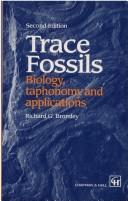| Listing 1 - 10 of 994 | << page >> |
Sort by
|
Book
Year: 1951 Publisher: Paris: Vincent, Fréal,
Abstract | Keywords | Export | Availability | Bookmark
 Loading...
Loading...Choose an application
- Reference Manager
- EndNote
- RefWorks (Direct export to RefWorks)
Book
Year: 1951 Publisher: Paris: Vincent, Fréal,
Abstract | Keywords | Export | Availability | Bookmark
 Loading...
Loading...Choose an application
- Reference Manager
- EndNote
- RefWorks (Direct export to RefWorks)
Book
Abstract | Keywords | Export | Availability | Bookmark
 Loading...
Loading...Choose an application
- Reference Manager
- EndNote
- RefWorks (Direct export to RefWorks)
Article
Abstract | Keywords | Export | Availability | Bookmark
 Loading...
Loading...Choose an application
- Reference Manager
- EndNote
- RefWorks (Direct export to RefWorks)
Book
Year: 1962 Publisher: Paris : Presses universitaires de France,
Abstract | Keywords | Export | Availability | Bookmark
 Loading...
Loading...Choose an application
- Reference Manager
- EndNote
- RefWorks (Direct export to RefWorks)

ISBN: 0412614804 Year: 1996 Publisher: London : Chapman and Hall,
Abstract | Keywords | Export | Availability | Bookmark
 Loading...
Loading...Choose an application
- Reference Manager
- EndNote
- RefWorks (Direct export to RefWorks)
Book
Year: 1955 Publisher: Paris, : Maloine,
Abstract | Keywords | Export | Availability | Bookmark
 Loading...
Loading...Choose an application
- Reference Manager
- EndNote
- RefWorks (Direct export to RefWorks)
Book
Year: 1956 Publisher: New York : Academic Press,
Abstract | Keywords | Export | Availability | Bookmark
 Loading...
Loading...Choose an application
- Reference Manager
- EndNote
- RefWorks (Direct export to RefWorks)
Book
ISBN: 9493194396 9789493194397 Year: 2021 Publisher: Barkhuis
Abstract | Keywords | Export | Availability | Bookmark
 Loading...
Loading...Choose an application
- Reference Manager
- EndNote
- RefWorks (Direct export to RefWorks)
This handbook is a completely revised version of the first edition, which was published in 2012. Plant palaeoecologists use data from plant fossils and plant subfossils to reconstruct ecosystems and food economies of the past. This book deals with the study of subfossil plant material retrieved from archaeological excavations and cores dated to the Late Glacial and the Holocene. One of the main objectives of this book is to describe the processes that underlie the formation of the archaeobotanical archive and the ultimate composition of the archaeobotanical record - being the data that are sampled and identified from this immense archive. Our understanding of these processes benefits from a knowledge of plant ecology and traditional agricultural practices and food processing. This handbook summarizes the basic ecological principles that relate to the reconstruction of former vegetation and of the agricultural practices in particular. An important adaptation in this revised edition relates to new developments in the research on diaspores (seeds and fruits). This mainly concerns morphology, taxonomy, and ecology. We reduced the treatment of research on pollen somewhat, and we now present it in an equivalent manner to the other research disciplines. We have extended the cereals with millets, a variable group of grains that play an important role in the agricultural development of both Eurasia and northern Africa. The taxonomy is largely in line with new insights based on combined morphological and genetic research, as published by the Angiosperm Phylogeny Group.
Book
ISBN: 0918985153 Year: 1985 Publisher: Tulsa Society of economic paleontologists and mineralogists
Abstract | Keywords | Export | Availability | Bookmark
 Loading...
Loading...Choose an application
- Reference Manager
- EndNote
- RefWorks (Direct export to RefWorks)
| Listing 1 - 10 of 994 | << page >> |
Sort by
|

 Search
Search Feedback
Feedback About UniCat
About UniCat  Help
Help News
News